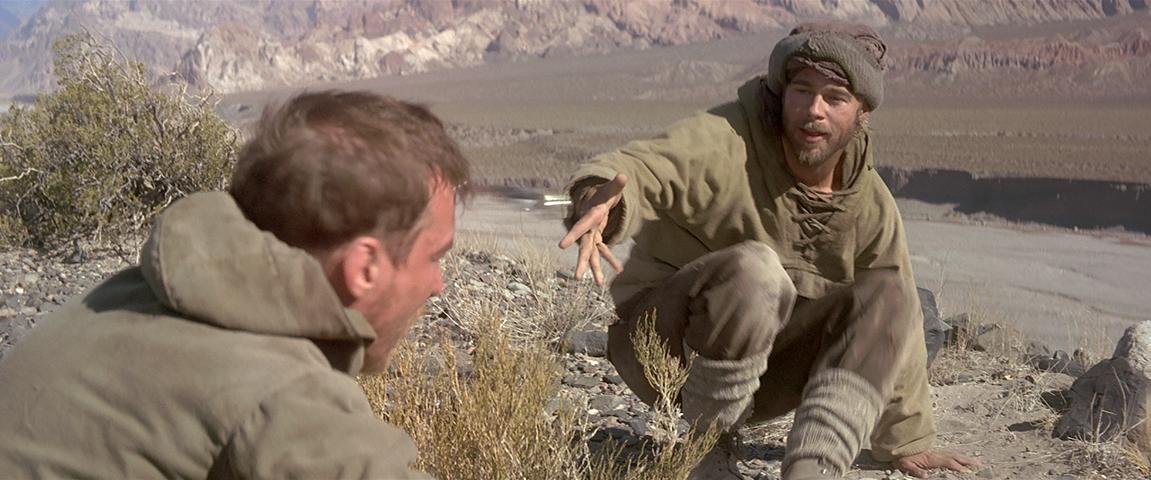- Three Years In Tibet War
- Three Years In Tibet Museum
- Seven Years In Tibet Cast
- Three Years In Tibet Movie
- Seven Years In Tibet Film
- Three Years In Tibet Mountains
Washington, D.C., June 27, 2019 – Recently declassified U.S. documents posted to mark the 60th anniversary year of the Dalai Lama’s flight out of Tibet depict sharp divisions among Chinese authorities over how to cope with the contested region and conclude that Beijing had “badly mismanaged” its policies and brought “disaster” to the majority of Tibetans. The documents – a series of State Department cables – cover an important turning point in the global Cold War, 1979-1980.
Three Years In Tibet War

- During the first three quarters of this year, the Tibet autonomous region's GDP reached more than 130 billion yuan ($20 billion)-up 6.3 percent year-on-year-placing its growth above all other.
- Seven Years in Tibet is a stunning adventure story, as Harrer and his climbing partner, Peter Aufscnaither (played by the English actor David Thewlis), spend nearly two years hiking through mountain passes of between 15,000 and 30,000 feet to reach the legendary “Land of Snows.”.
Today’s posting by the nongovernmental National Security Archive offers an unusual window into a subject -- the nature and impact of Chinese rule over Tibet -- that for decades has been notoriously opaque. Official statements from Congress and the U.S. Embassy in Beijing during this anniversary year show this to be an ongoing concern 60 years later.

Three years after the Chinese edition of her book appeared, Woeser, myself, and the translator Susan Chen began work on an English-language version. We revised and updated the text, added new information to the captions, and included a postscript by Woeser on the changes in Lhasa since her father took his photographs.
The declassified cables also provide useful insights from a critical time – when the United States was considering normalizing relations with Beijing (and terminating the CIA’s covert aid program to Tibet) and China was on the verge of launching a sweeping reform campaign under Deng Xiaoping.
Among the key points made in these cables:
1) Two decades after the Dalai Lama fled Tibet, the U.S. verdict was that “China has badly mismanaged Tibet” - “by all accounts, China’s takeover had been a disaster” for most Tibetans.
2) Beijing’s efforts to pursue negotiations with the Dalai Lama about Tibet and his eventual return were plagued by a lack of coordination between the Party secretariat, the Foreign Ministry and the Party Central Committee’s United Front Work Department office responsible for Tibet.
3) The Dalai Lama’s efforts to engage with Beijing faced its own divisions within the Tibetan exile community, with factions favoring talks with China opposed by other groups who were “virulently anti-PRC” and opposed any discussions with Beijing, and the rise of a generation of Tibetans who never knew life in Tibet.
4) At one point, a Chinese official floated the idea, not followed up on, that Tibet might become a member of the UN, along the lines of Byelorussia, which had been given a UN seat alongside the USSR when the UN was founded. The fact that China’s United Work Front Department would seriously entertain such an idea showed “the lengths to which Beijing may be willing to go to entice the Dalai Lama to return,” and showed the persistence with which China had pursued its “cultivation” of the Tibetan refugees.


* * * * * * * *
This year marks the 60th anniversary of the 14th Dalai Lama’s flight out of Lhasa into exile in India. The 23-year-old religious leader's escape in March 1959 opened a new phase in the history of Tibet and of the deepening resistance to Beijing’s rule of what was termed the Tibetan Autonomous Region, or TAR. Tibet’s independence had always been subject to the complex geopolitical rivalries of England, Russia, and China going back to the Great Game of the 19h century and its 20th century manifestations. In a foreshadowing of the 14th Dalai Lama’s journey into India, his predecessor had made a similar flight in 1912 following the formation of the Chinese Republic, only to return soon after, once Chinese troops had left.
In 1913 Tibet reasserted its independence against British and Chinese efforts to secure control. This de facto independence would last until after World War II, when the new Chinese communist government moved to enforce its claim on Tibet and made the 14th Dalai Lama the head of state. In 1951 Beijing forced Tibetan leaders to sign a treaty known as the “Seventeen Point Agreement, which claimed to guarantee Tibet’s autonomy and respect its Buddhist religion, but also established Chinese political and military headquarters in Lhasa, the seat of the Dalai Lama’s religious and political authority. It was the growing resistance to Chinese rule that led to the revolt and his self-imposed exile in 1959. The Dalai Lama decided to flee not only for his own safety but also because of the growing potential for Tibetan casualties that might result from mounting Tibetan resistance to Chinese control and the outbreak of a rebellion in Lhasa driven by fears that Beijing planned to arrest him. The Dalai Lama established his residence and a government-in-exile in Dharamsala, which became the religious and political center of the Tibetan exile movement..[1]
Three Years In Tibet Museum

In the intervening years, two critical and related issues that have persisted are the impact of Chinese rule on Tibet, including charges of human rights violations and suppression of the Tibetan culture and Buddhist religion, and the efforts to establish a dialogue between the Dalai Lama and Beijing to address Tibet’s future status as well as the possible return of the Dalai Lama to Tibet. The continuing U.S. interest in securing access to Tibet in order to assess conditions there was driven home recently by the Reciprocal Access to Tibet Act of 2018 (RATA), which President Trump signed in December 2018.[2] The act specifically called for the reappointment of a special coordinator for Tibetan Issues at the State Department and for the U.S. to encourage dialogue between Beijing and the Dalai Lama leading to a negotiated agreement on Tibet. The first State Department report under the terms of the act, released on March 25, 2019, said that “the Chinese government systematically impeded travel to the Tibetan Autonomous Region” for U.S. diplomats and officials, journalists and tourists in 2018, and provided specific examples.[3] On May 7 and 9 of 2019, U.S. senators and congressmen wrote to Secretary of State Mike Pompeo and Sam Brownback, the ambassador at large for international religious freedom, calling on the Trump administration to fully implement the Reciprocal Access Act and to work with the international community to fight Beijing’s interference in Tibetan Buddhism, especially its moves to claim sole authority over determining the next Dalai Lama.[4] Later the same month, the U.S. embassy in Beijing issued a statement following U.S, Ambassador Terry Branstad’s visit to Tibet, reaffirming U.S. support for dialogue between China and the Dalai Lama, freedom of religion for Tibetans, and more open access to Tibet.[5]
The documents posted on the National Security Archive’s web site today date from another significant turning point four decades ago in the history of the Tibet issue. The two decades following 1959 were marked by the U.S. CIA-directed Tibetan guerilla campaign against China, and the devastating economic and religious impact on Tibetans of the Great Leap Forward and Cultural Revolution. By 1979, important changes were in train, as the U.S. moved to normalize relations with China (which included ending the covert Tibetan programs) and as Beijing, taking stock of its failed policies in Tibet, initiated in 1980 an extensive set of reforms in its Tibet policies. These policies were part of a wider reform effort launched under the leadership of Chinese paramount leader Deng Xiaoping, who worked closely with Hu Yaobang, who became general secretary of the Communist Party of China (CPC) Central Secretariat in February 1980, and would later hold the positions of chairman and general secretary of the CPC.[6]
In 1979-1980, the U.S. had three windows into Chinese policies in Tibet and the efforts to promote a dialogue between the Dalai Lama and Beijing: the U.S. embassy in New Delhi, where the Indian government kept a close eye on Sino-Tibetan issues; the U.S. consulate general in Hong Kong, which had contacts with Chinese officials and news media, as well as opportunities to meet with representatives of the Tibetan exile community; and the U.S. embassy in Beijing once normalization of relations was completed in 1979. The cables posted here demonstrate the challenges involved in Beijing’s efforts to work with the Dalai Lama and the Tibetan exile community, and China’s attempts to address the critical problems arising from the previous two decades of Chinese rule in Tibet. The cables include the following highlights:
1) U.S. Consul General Thomas P. Shoesmith reported in October 1980 that two decades after the Dalai Lama fled Tibet, “China has badly mismanaged Tibet.” Based on first-hand observations by a consulate general official, “Poverty and ardent Buddhism” were the realities there, and “by all accounts, China’s takeover had been a disaster” for most Tibetans. (Document 17)
2) In 1980, Beijing embarked on a major effort to reform the policies governing Tibet, in the hopes of repairing deep damage to Tibet’s economy, religion and culture, and the resulting enmity from the Tibetan populace. These reforms emerged from Party secretariat meetings in April and were announced by Party General Secretary Hu Yaobang during a high-level Chinese government and Party delegation visit to Tibet in May 1990. These reforms aimed at returning more autonomy and control to local economic activities, especially agriculture, greater respect for Tibetan culture and religions, including a requirement that Han cadres take Tibetan language lessons, and a general move to replace extensive numbers of Han cadres with Tibetan cadres. One over-arching goal was stated by Xue Jianhua, a member of Beijing’s National Commission of Nationalities, who told a U.S. embassy officer that the policy is “to win over the Dalai Lama, and this policy will not change.” [Documents 11, 12, 13, 14, and 16] This latter goal was explicitly denied, however, by the deputy director of the United Front Work Department – described by one informant as “one of the meanest, toughest Chinese he has ever met” – who said the reforms were for Tibetans and had nothing to do with the Dalai Lama, and who complained that the groups of visiting Tibetan exile representatives only “came and complained” without making any concrete proposals.[Document 15]
Seven Years In Tibet Cast
3) Beijing’s efforts to engage with the Dalai Lama were hampered by other signs of an apparent lack of coordination on Tibet policies. This was seen in such bureaucratic but symbolic issues as Beijing having to overrule its embassy in India on the matter of forcing a delegation of Tibetan exiles to declare their status as “overseas Chinese” before they could be given visas for their trip to China and Tibet. [Documents 4 and 5] Another case of mixed signals came when Beijing protested to the State Department the Dalai Lama’s planned trip to the U.S to attend a religious conference, while the Chinese United Front Work Department office responsible for Tibetan religious issues had indicated through contacts in Hong Kong that China was interested in encouraging a meeting between the Dalai Lama and the Chinese delegation to the conference. [Documents 8 and 9]
4) Similar divisions marked the Tibetan exile community, as efforts to forge a modus vivendi between Beijing and the Dalai Lama were complicated by divisions among exiles regarding whether and how to proceed. The Dalai Lama had to deal with the “byzantine factionalism” within the exile community, which included some who were “virulently anti-PRC” and opposed any discussions with Beijing, and the rise of a generation of Tibetans who never knew life in Tibet. [Documents 6, 7, 15]
Three Years In Tibet Movie
5) While trying to establish an acceptable dialogue with the Dalai Lama, Beijing was extremely sensitive to the religious leader traveling and holding meetings in other countries, as seen in the reaction to the Dalai Lama’s visits to Moscow and the United States to attend religious conferences. [Documents 4, 5 and 8]
Seven Years In Tibet Film
This Tibetan Spring of sorts would be short-lived. As discussed in an earlier document posting (see the information in endnote 6), the new Chinese policies in Tibet and the efforts to engage the Dalai Lama in talks did not produce either a long-lasting improvement in the lives of Tibetans or the Tibetan leader's return from exile. By 1987, Hu Yaobang had fallen out of favor with Deng and lost his post as party chairman, and Beijing had reverted to more repressive policies in Tibet. The Dalai Lama, rebuffed in his efforts to persuade China to grant Tibet a degree of autonomy that would truly protect Tibetan culture and religion, turned increasingly to the world stage to press his claims, resulting in further entrenchment by the Chinese.
A series of future document National Security Archive web postings, covering the Reagan, Bush I and Clinton years, will provide new windows into this subsequent phase of Sino-Tibetan history, Washington’s efforts to pierce Chinese barriers to information about Tibet, and its support for dialogue between Beijing and the Dalai Lama.
Three Years In Tibet Mountains
The Documents
